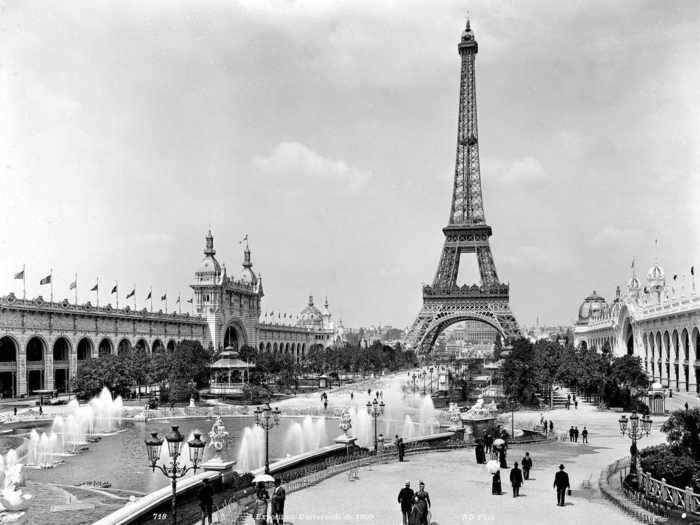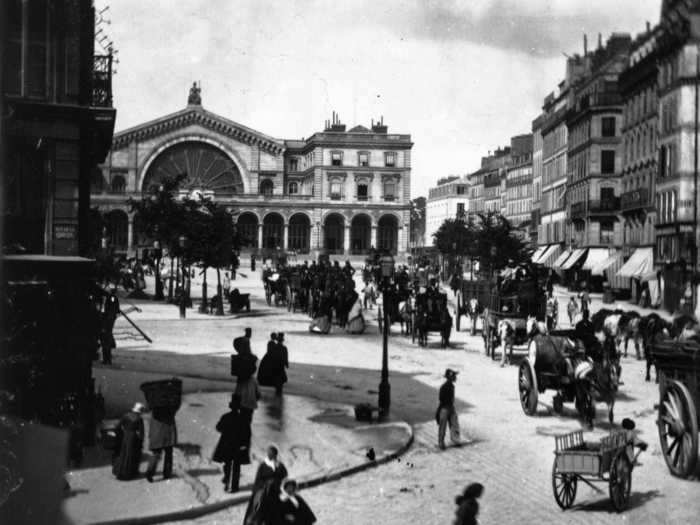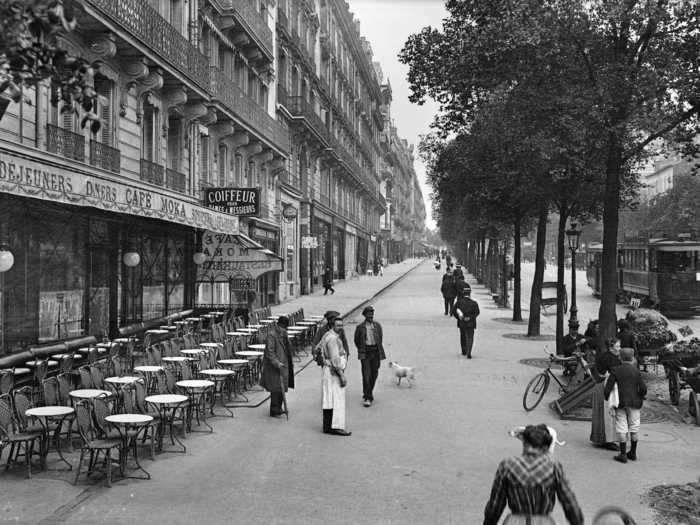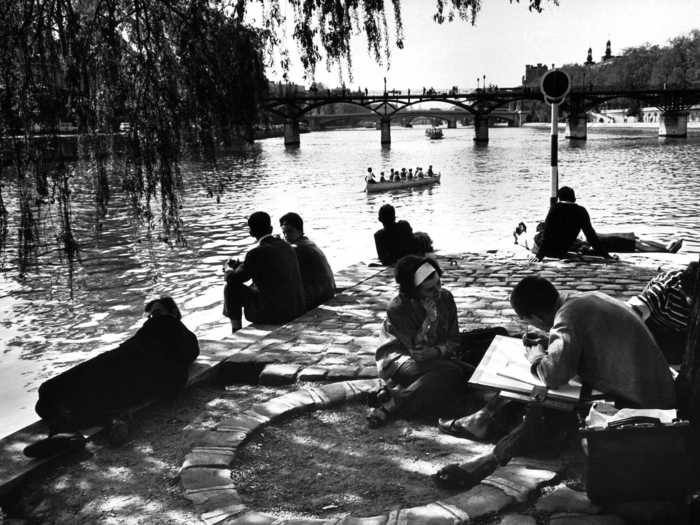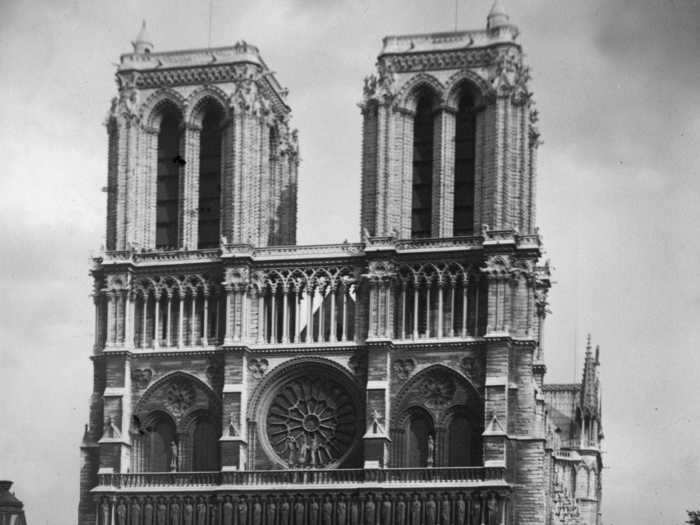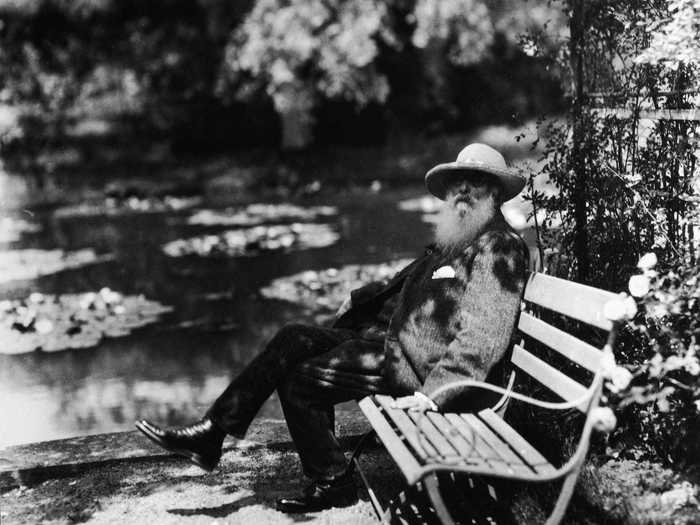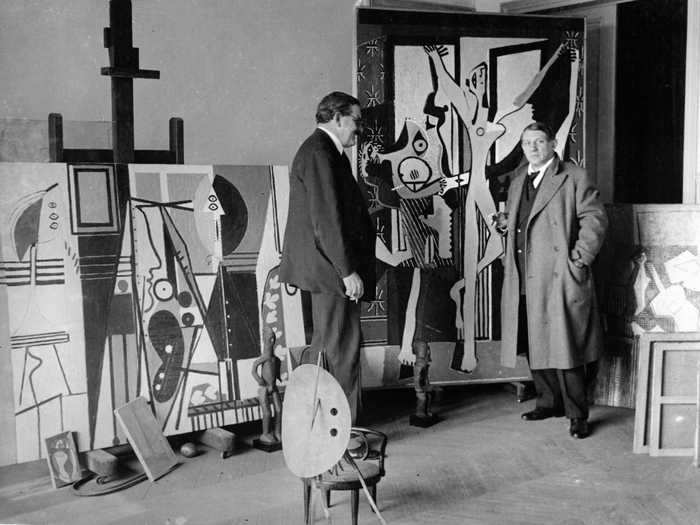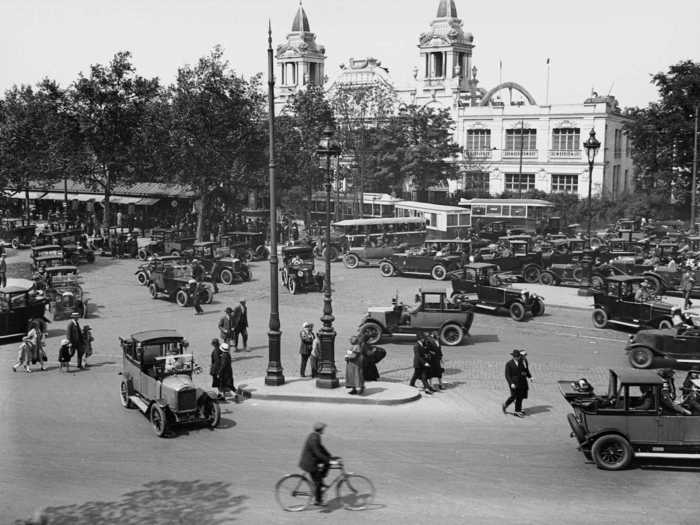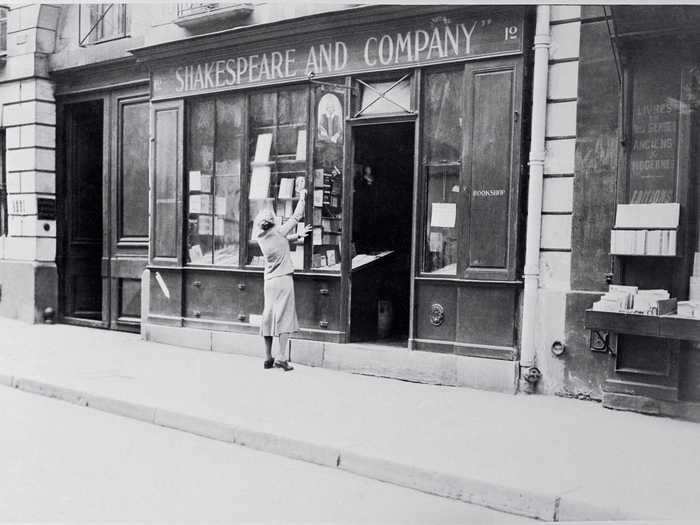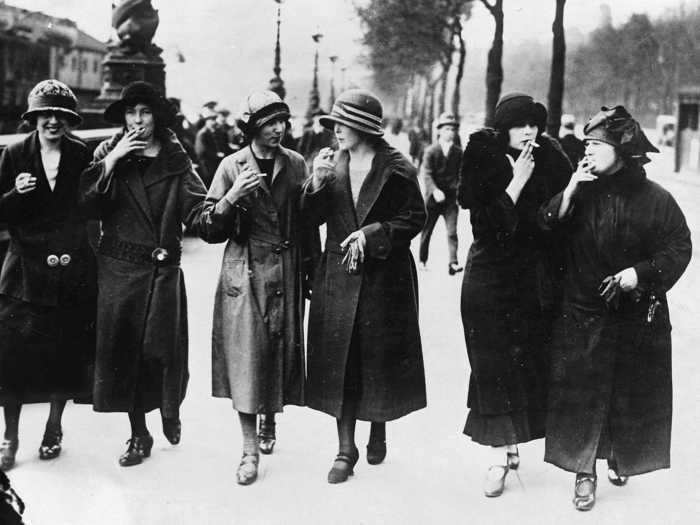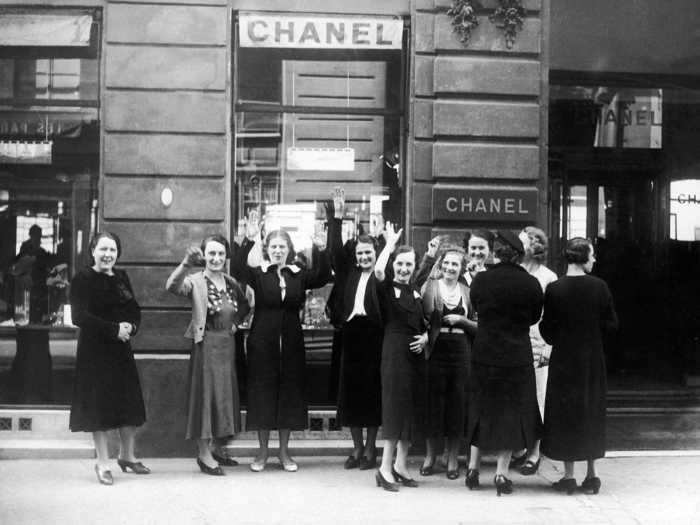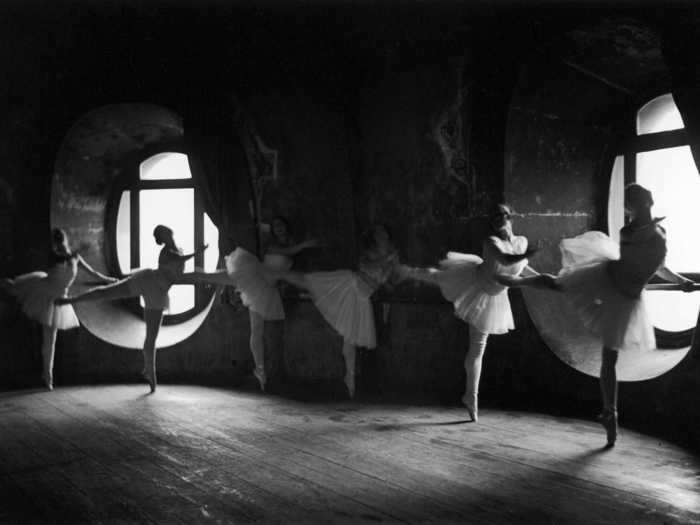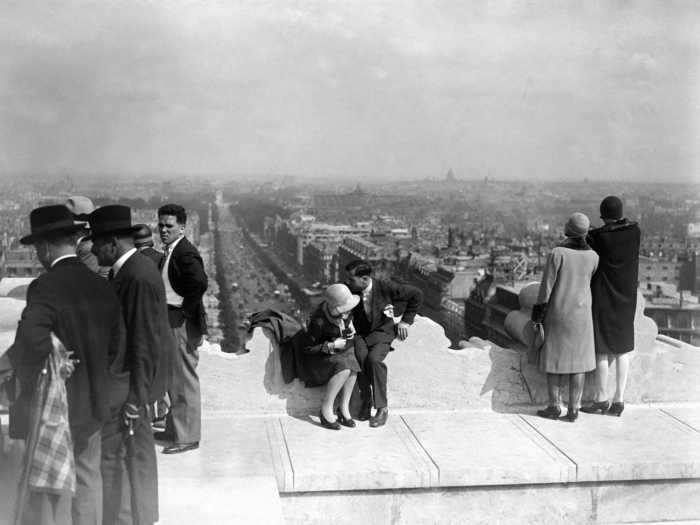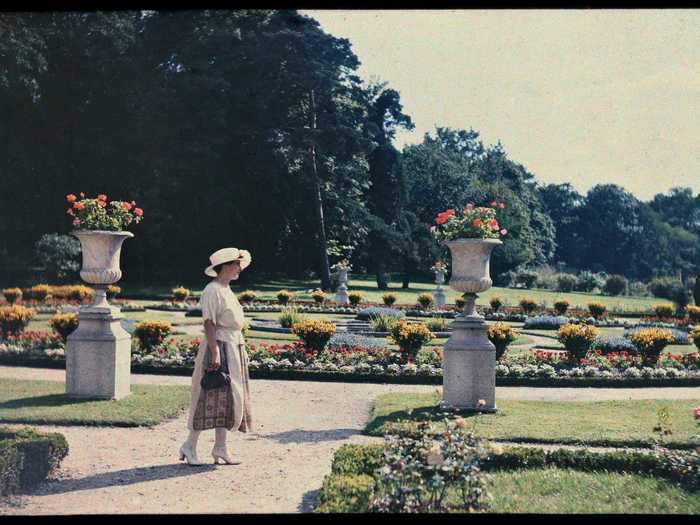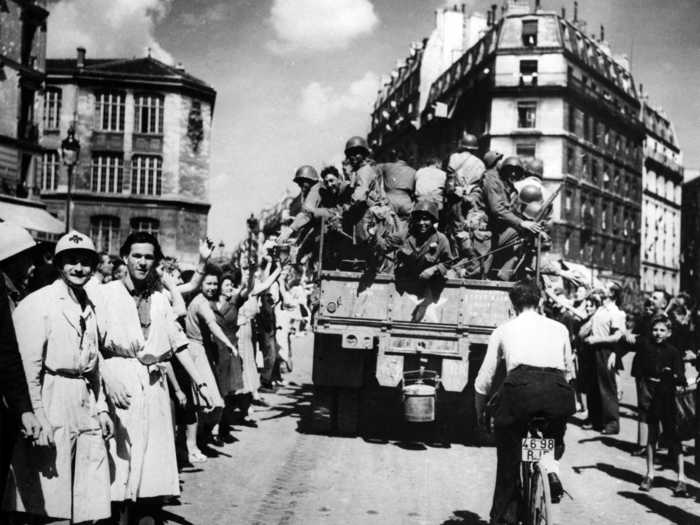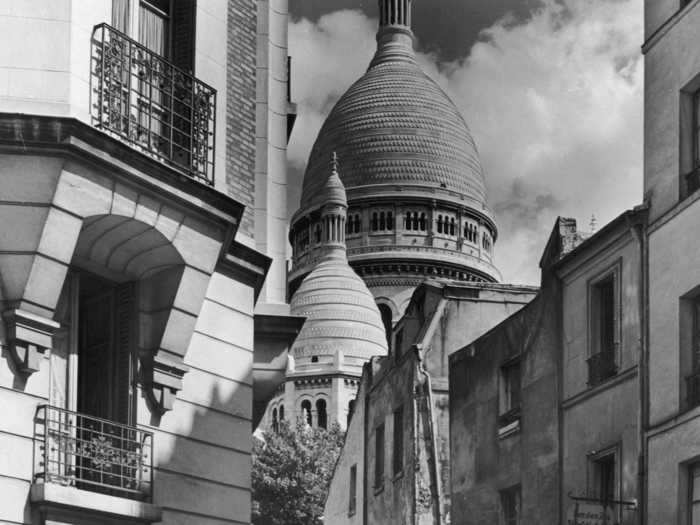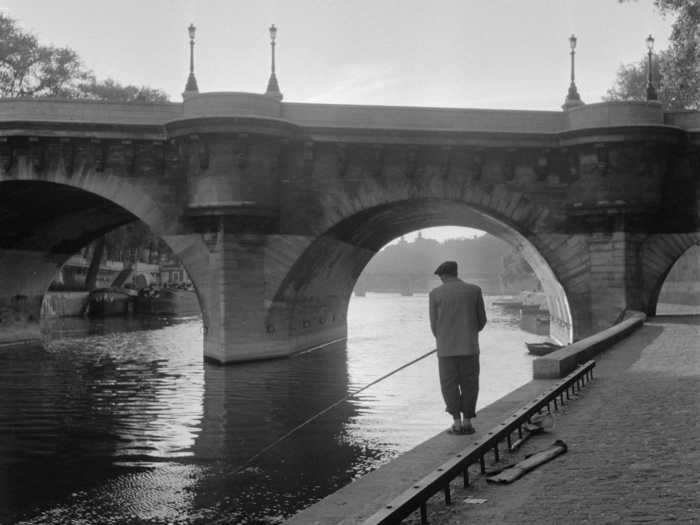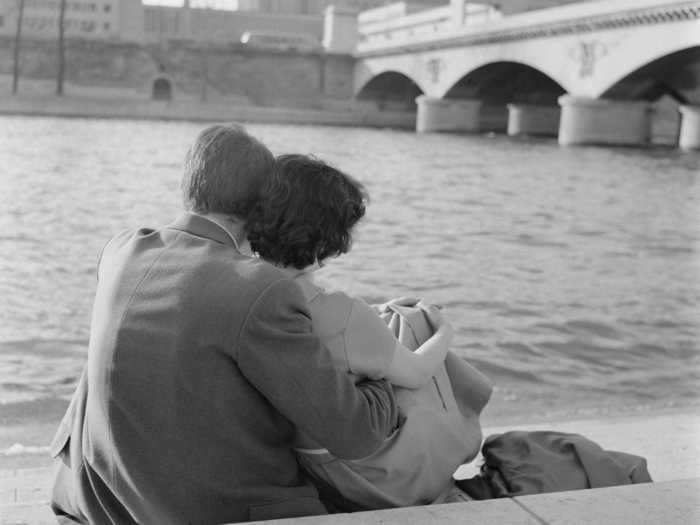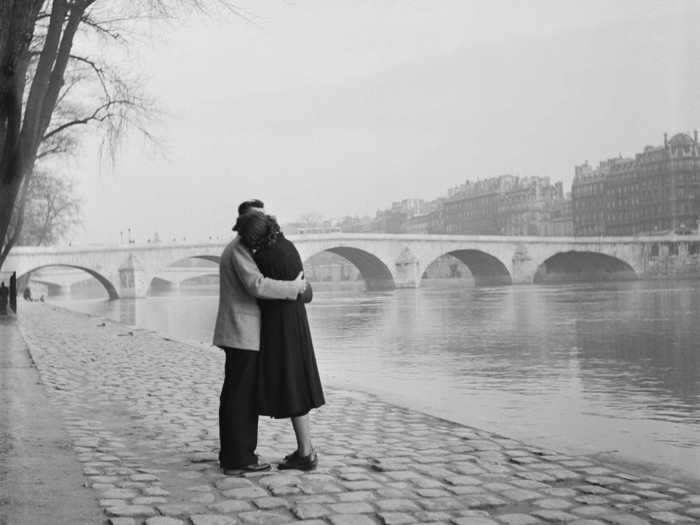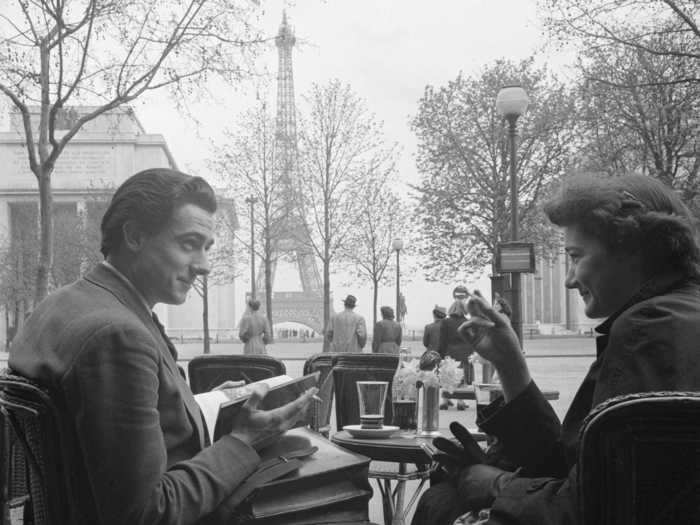Lady from the Parisian bourgeoisie near a flower bed in the jardin de Bagatelle in Paris 1920 ca Anonymous autochrome Private collectionLeemage/Corbis via Getty Images
- We could all use a break from the never-ending frenzy of pandemic headlines. So why not travel back in time to one of the world's most romantic cities?
- "The city of lights" is more than 2,000 years old, and throughout its lifetime, Paris has been the stomping grounds of some of the world's most influential thinkers, artists, and poets.
- These vintage photos take us through dreamy Parisian culture, dating back to the 1800s.
Perhaps Ernest Hemingway said it best when he dubbed Paris "A Moveable Feast" — a piece of the world that, if you're lucky enough to experience, stays with you for life.
Throughout its vast history, Paris has become known as one of the most romantic cities on earth, a place where couples flock to on honeymoons, and where artists and poets get their inspiration.
The city has been home to some of the most important movements within art and literature, and its iconic architecture and vast cultural history has made it an irresistible travel destination.
So, at a time when the coronavirus pandemic has put a halt on global travel, why not take a look back at this iconic city's history?
These vintage photos give a glimpse into the evolution of Parisian life, spanning from the 1800s to the 1950s.
Read the original article on
Insider
Paris has a rich cultural history dating back to roughly 250 BC. The city was first settled on one bank of the Seine River, and later expanded to become the capital of France around 980 AD.
World Fair of 1900, Paris. The park of Champ-de-Mars. Seen taken of the palace of the Electricity.
ND/Roger Viollet via Getty Images
During the French Renaissance, Paris emerged as a leader in art, architecture, and science. By the mid-1800s, the city underwent a period of modernization that gave way to new boulevards and public works. Here, the Gare de L'Est train station is seen in 1860.
A busy street outside the Gare de L'Est in Paris in 1860.
William England/London Stereoscopic Company/Getty Images
Under new development projects by Napoleon III, the city became known for its beautiful, tree-lined streets. Outdoor cafes and restaurants have long shaped the cultural history of Parisian life.
CIRCA 1890: Paris (XVIIth district). The Wagram avenue, about 1900.
ND/Roger Viollet via Getty Images
As the city grew in its cultural history, the Left Bank of the Seine became associated with intellectuals, while the Right Bank was associated with business.
Parisians on the banks of the Seine.
Parisians on the banks of the Seine
One of the most iconic landmarks of Paris, the Notre Dame Cathedral, was first completed in 1345 as a distinguished piece of Gothic architecture. But the cathedral decayed during the French Revolution until reconstruction began in the late 1800s.
Paris (Ist district). The nave of the Notre-Dame church, around 1870-1880.
ND/Roger Viollet via Getty Images
Throughout its lifetime, Notre Dame has experienced multiple fires, the most recent of which occurred in 2019.
circa 1920: West front of Notre Dame in Paris with its three French Gothic arched doorways.
Herbert Felton/Herbert Felton/Getty Images
Now a defining feature of the city, the Eiffel Tower was built for the World's Fair in 1889. It was meant to celebrate the centennial of the French Revolution — but many Parisians didn't like the way the now-iconic landmark looked.
The Eiffel Tower under construction, the photograph was taken around 1888.
Photo12/Universal Images Group via Getty Images
In the late 1800s, Paris became home to the French Impressionist movement, a period of art that featured the work of famous painters such as Claude Monet (seen here in the 1910s) and Edgar Degas.
French impressionist painter Claude Monet (1840 - 1926) sits on a bench beside the water lily pond in his home garden, Giverny, France, 1910s.
Hulton Archive/Getty Images
During the 1920s, as Europe emerged from World War I, Paris became the home to a new generation of artists and writers. This vibrant period of Parisian life was often defined by poetry, jazz, and wild parties.
Paul Fort (1872-1960), the "prince of the poets" (on the right), in the terrace of Closerie des lilas, boulevard of Montparnasse. Paris, VIth district, 1920.
Branger/Roger Viollet via Getty Images
Famous artists such as Pablo Picasso, Ernest Hemingway, and F. Scott Fitzgerald lived in Paris during this decade of booming creativity.
Pablo Picasso (1881-1973), Spanish painter and sculptor poses in his studio in 1922 Paris, France.
Albert Harlingue / Roger-Viollet/Getty Images
During this period, Paris was bustling with American travelers and ex-pats, plus a newfound sense of artistic freedom, dubbed "bohemian culture."
Paris, XVIIth district. The Porte Maillot, 1925.
Roger Viollet Collection/Getty Images
Shakespeare and Company, an English-language bookstore in the heart of the city, became a gathering place for the most distinguished ex-pat and French writers of the time.
Sylvia Beach, founder and owner of the Shakespeare & Company bookstore in Paris decorates the store's window. Beach's bookstore became an important part of the Paris literary scene from 1919 to 1941.
Getty Images
Fashion became a defining point of Parisian culture. In this photo, women from Germany are seen wearing Parisian style-clothing and smoking cigarettes to fit in circa 1925.
Women from Berlin smoking in the street to imitate the Parisian women, circa 1925.
Albert Harlingue/Roger Viollet via Getty Images
By the 1920s, famous fashion designers including Coco Chanel were renowned in Paris.
Women stand outside of a Coco Chanel shop in Paris.
Keystone-France/Gamma-Keystone via Getty Images
Another iconic establishment in Paris includes The Moulin Rouge, a famous nightclub known for its cabaret dancers and burlesque performances. Here, the building is pictured in 1931.
The Moulin Rouge, Paris, 1931.
The Print Collector/Print Collector/Getty Images
In this photo, ballerinas in the Parisian Grand Opera are photographed rehearsing in a Parisian dance studio in 1930.
Ballerinas at barre against round windows during rehearsal for Swan Lake at Grand Opera de Paris.
Alfred Eisenstaedt/The LIFE Picture Collection via Getty Images
The Arc de Triomphe is another city staple. The monument opened in 1836 to honor those who died during the Revolutionary War. From the top of the arc, visitors can enjoy a panoramic view of Paris, which looks a little different today from how it did here in 1929.
Tourists on top of the Arc de Triomphe, in July 1929 in Paris, France.
Gamma-Keystone via Getty Images
Paris is also home to a number of beautiful gardens and parks. In this photo, a woman walks through the Jardin de Bagatelle in the 1920s.
Lady from the parisian bourgeoisie near a flower bed in the jardin de Bagatelle in Paris 1920.
Leemage/Corbis via Getty Images
During the 1940s, Paris entered a dark period when it fell to Nazi occupation during World War II. In 1944, allied forces liberated the city.
The liberation of Paris, August 1944. Jubilant crowds take to the streets to welcome their Allied liberators.
Art Media/Print Collector/Getty Images
Following the liberation of Paris, the city once again emerged as a center for art and culture in the 1950s.
A Parisian woman at a cafe in Paris, 1951.
Kurt Hutton/Getty Images
Here, an artist is seen painting the Basilica of Sacré-Cœur, or "The Sacred Heart of Paris," a Roman Catholic Church situated atop a hill that overlooks the city.
An artist paints the Basilica of Sacre Coeur while sitting at an easel on a street corner in the Montmartre district of Paris, France.
Hulton Archive/Getty Images
Paris has become known for its dreamy scenery and architecture, leaving many to consider it the most romantic place in the world.
circa 1950: A lone fisherman casts his line into the River Seine under one of Paris's many bridges.
Three Lions/Getty Images
Nicknamed by some as "the City of Love," Paris has long been one of the top romantic destinations for couples to visit.
A young couple on the banks of the River Seine in Paris, France, in the spring, April 1958.
Gunter R. Reitz/Pix/Michael Ochs Archives/Getty Images
In this photo, a couple is seen embracing on the bank of Seine in the 1950s.
A courting couple on the bank of the Seine, Paris, 1954.
Fred Van Schagen/BIPs/Hulton Archive/Getty Images
And here, a young couple sits outside at a Parisian cafe overlooking the Eiffel Tower in 1950.
A couple smile at one another as they sit together at an outdoor cafe in sight of the Eiffel Tower, Paris, France, April 1950.
Mark Kauffman/The LIFE Picture Collection via Getty Images

